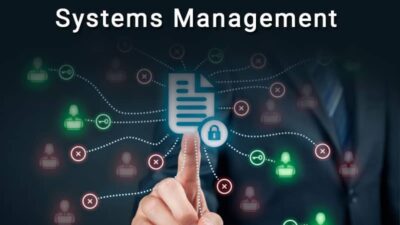Managed PoE switches are more powerful and versatile than their unmanaged counterparts, making them a popular choice for organizations that need to keep up with their ever-evolving network traffic. But before you make the switch (pun intended), it’s important to understand what managed PoE switches offer and how they differ from other types of network switches. In this article, we’ll go over everything you need to know about managed PoE switches, including their features, benefits, and installation considerations. We’ll also discuss why they can be a great option for businesses seeking an upgrade to their current networking system.
What is a Managed PoE Switch?
A managed PoE switch is a power over Ethernet switch that gives you more control over your network. With a managed switch, you can monitor and manage your network remotely. This can be useful if you have multiple devices on your network or if you want to keep an eye on your network traffic. A managed PoE switch can also give you the ability to control which devices have access to your network and when they have access.
The Benefits of Using a Managed PoE Switch
Managed PoE switches offer a number of benefits over traditional switches, including the ability to remotely configure and manage the switch, as well as monitor network activity. Additionally, managed PoE switches provide power to devices over Ethernet cables, which can simplify wiring and reduce costs.
One of the biggest benefits of using a managed PoE switch is the ability to remotely configure and manage the switch. This can be done through a web interface or via command-line interface. Additionally, most managed PoE switches allow for remote firmware updates, which can help keep your network up-to-date.
Another benefit of using a managed PoE switch is the ability to monitor network activity. This allows you to see which devices are connected to the switch and how much traffic they are generating. This information can be used to troubleshoot network issues or identify potential bottlenecks.
Lastly, managed PoE switches provide power to devices over Ethernet cables. This can simplify wiring and reduce costs associated with installing Power over Ethernet (PoE) injectors. In some cases, it may also be possible to use existing Ethernet cables for both data and power.
How to Choose the Right Managed PoE Switch for Your Needs
When it comes to choosing a managed PoE switch for your needs, there are a few things you need to take into account. First, you need to decide what type of switch you need. There are two main types of switches: Layer 2 and Layer 3. Layer 2 switches are typically used for small networks, while Layer 3 switches are used for larger networks.
Second, you need to decide on the number of ports you need. The number of ports will determine how many devices can be connected to the switch. Third, you need to decide on the speed of the switch. The speed is measured in gigabits per second (Gbps).Fourth, you need to decide on the management features that you need. There are a variety of management features available, such as VLANs, quality of service (QoS), and security features.
Finally, you need to consider the price of the switch. Managed switches can be quite expensive, so you’ll want to make sure that you choose one that fits within your budget.
The Different Types of Managed PoE Switches
A managed PoE switch is a network switch with Power over Ethernet injection that can be configured to different settings. Most managed switches are capable of Layer 2 switching, and some have Layer 3 capabilities. There are three different types of managed PoE switches:
- Standalone Managed PoE Switch: A standalone managed PoE switch has all the features and management functions built in, so it can be used as a standalone device on your network. These switches are usually more expensive than other types of managed switches, but they offer more flexibility and control.
- Modular Managed PoE Switch: A modular managed PoE switch consists of two parts: the chassis and the module. The chassis is the main part of the switch, and it contains the power supplies, cooling fans, and other hardware components. The module is a plug-in card that contains the switching fabric and management software. Modular switches are less expensive than standalone switches, but they’re not as flexible because you can’t mix and match modules from different manufacturers.
- Stackable Managed PoE Switch: A stackable managed PoE switch is a type of modular switch that allows you to stack multiple units together to create a single logical unit. Stackable switches are more expensive than modular switches, but they offer more scalability and flexibility because you can add or remove units as needed.
Managed PoE Switch Features
When it comes to managed PoE switches, there are a few key features that you should look for. Here are some of the most important:
- Port count and density: The first thing to consider is how many ports you need on your switch. If you have a lot of devices that need to be connected, you’ll need a switch with a high port count. But if you’re working with limited space, you might want to opt for a switch with a higher port density (i.e., more ports per unit of space).
- Power budget: Another important consideration is your power budget. Managed PoE switches typically come with different power budgets, so it’s important to choose one that can accommodate all the devices you want to connect.
- Management features: When it comes to management features, there are a few things to look for in a managed PoE switch. First, you’ll want to make sure the switch offers remote management capabilities so you can control it from afar. Second, look for features like VLAN support and Quality of Service (QoS), which can help you optimize your network traffic.
- Security features: Finally, don’t forget about security when choosing a managed PoE switch. Look for features like access control lists (ACLs) and data encryption to help keep your network safe from outside threats.
Conclusion
Managed PoE switches provide users with advantages like enhanced security, improved performance, increased scalability and reduced downtime. With the right switch in place, organizations can be sure of a smooth and secure network experience. In addition to their advanced features, managed PoE switches are also easy to install and maintain making them a great choice for businesses looking for efficient networking solutions. We hope that this article has helped you understand everything there is to know about managed PoE switches so you can choose the best fit for your organization’s needs.










